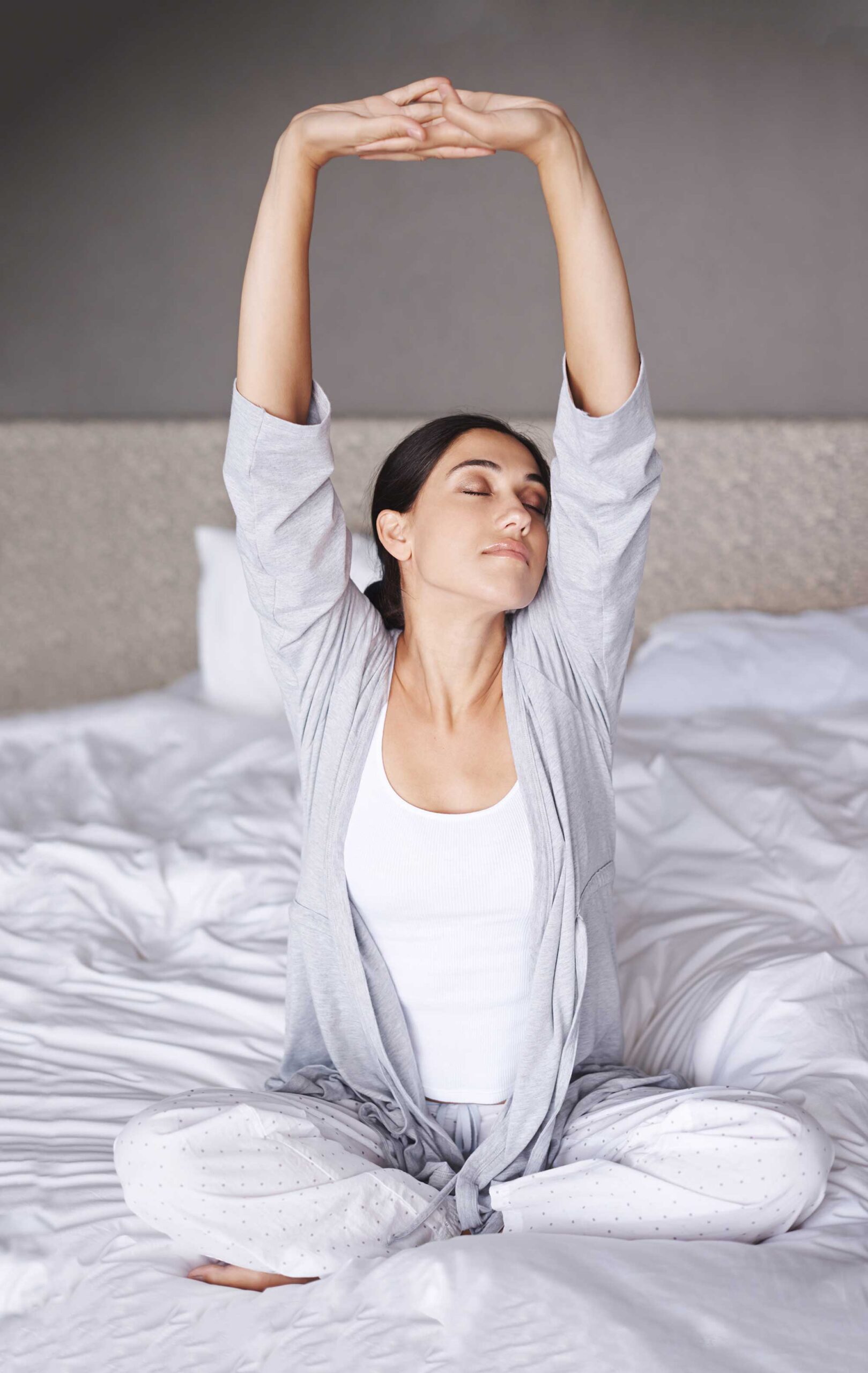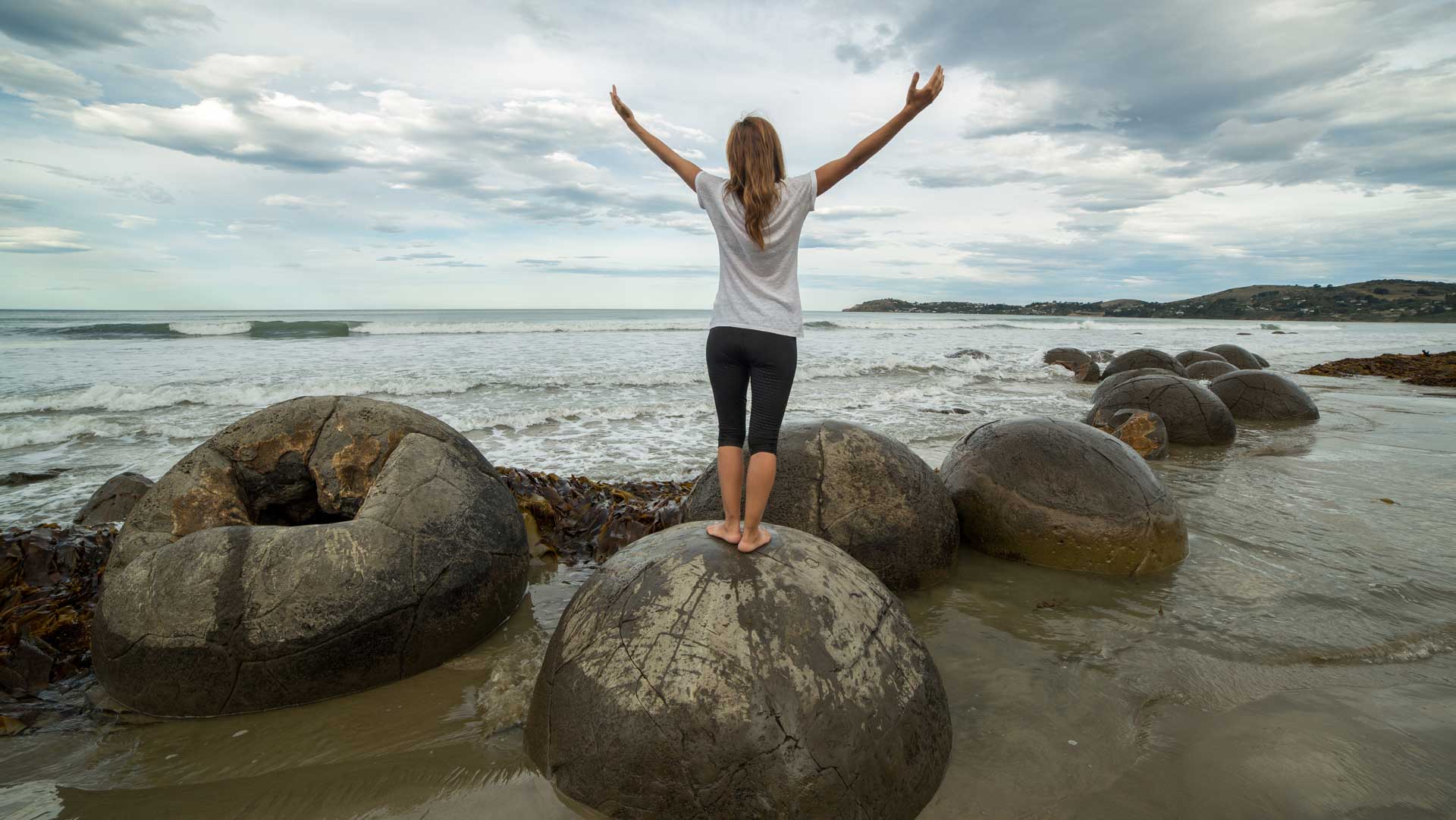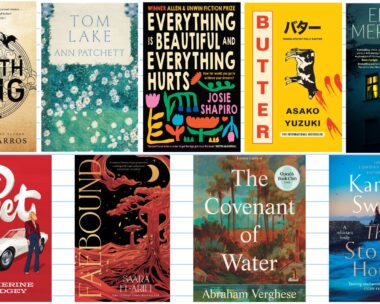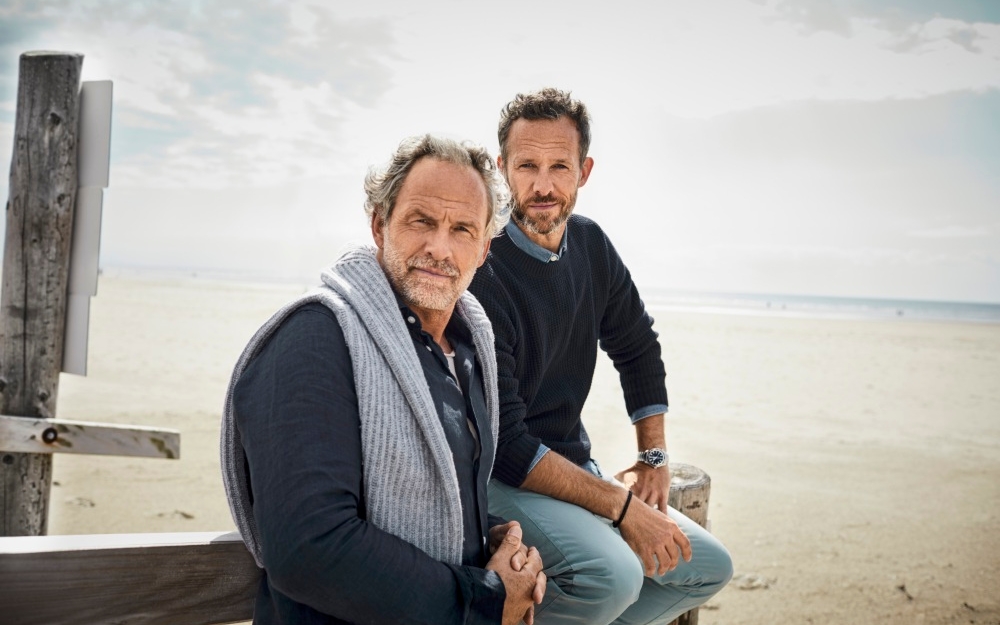It’s 6am and pitch black outside. But I don’t need an alarm to get going. In fact, I ditched it two years ago. Instead, most days, my body wakes at this time naturally.
I wiggle my fingers and toes, then slowly start breathing: in for four counts, out for eight. I concentrate only on my breath, the rise and fall of my diaphragm and extending the exhalation – feeling a sense of radiant vibration throughout my entire body.
After 10-20 of these long, slow breaths, I roll onto my side, get out of bed and walk into the lounge. I light a tea light candle in my Himalayan salt holder or burn a little bit of incense to clear the energy in the room, make a hot cup of tea, unroll my yoga mat, sit on a bolster and continue with my breathing.
I take a big inhale, put my thumbs to my forehead and hum quietly, feeling the sound vibrations through my head. I inhale, fold up my tongue and exhale. Then I inhale, relax my lips and start pumping my diaphragm as I exhale 30 times.
Oil and salt
After these breathing exercises (known as pranayama, which means ‘to extend the vital life force’), I head to the shower and dry-brush my body to help get my circulation going and remove toxins. Then I massage a couple of slugs of sesame oil all over my body before jumping in.
When I get out, I clean my teeth, scrape my tongue and do a nasal cleanse. This involves adding lukewarm water and a pinch of salt to a copper neti pot that’s hanging out my bathroom window. I pour half the water into one nostril and half the water into the other nostril before gently blowing my nose.
The idea of this cleanse is you flush out whatever’s in your sinuses – boosting the immune system because the germs aren’t hanging about, balancing hormones and crystallising your thoughts.
An established routine
Post-shower, I warm up with some sun salutes and move through a series of grounding yoga poses. From there, I get myself into a comfy position and begin a short meditation. I recite a mantra in Sanskrit and use a string of mala beads to help me stay focused on the chant in my head.
Once meditation is done, I bow my head and give thanks for the day. I dress and head to the kitchen to make a hot bowl of porridge, and once that’s devoured I’m off to my office to write.
For the past two years, I’ve worked hard to make this morning routine my priority because it’s helped me thrive after years of experiencing debilitating anxiety.
Known as yoga therapy, this combination of yoga, meditation, breath work and Ayurveda (the ancient Indian system of medicine – see box on the next page) focuses on the individual achieving a dynamic state of balance between mind, body and environment.

The benefits of yoga for anxiety
“The whole idea with yoga is we’re bringing the body and mind to a place of stillness. In today’s world, there’s a real pose-related identification with yoga, but we need to change the concept of that idea,” explains yoga therapist Vandana Steadman.
“Yoga is actually about bringing together the essence of a person – mind, body, emotions, wisdom and what creates innate happiness.”
That’s why during her initial consultations, Vandana spends time observing and listening for ‘tells’ as to the state of a client’s body and mind. One person may have unusually dry skin. Someone else, poor digestion.
“When you first arrived, we started chatting, but while we were talking, I was looking at things such as what your skin is like, how dry your lips are, and asking if you felt like you had ‘an inconsistency of mind’,” says Vandana. “I was looking at the quality of your functions.”
Needless to say, when I pitched up for my first consultation at the Yoga Therapy Centre, I was a mess. I’d spent the two years prior really struggling – wracked with anxiety, often on the verge of tears, and had a nervous system as frayed as an old woollen blanket.
But although I’d found a little relief by going to an Iyengar yoga class once a week at Four Winds Yoga and practising at home, I’d never heard of yoga therapy. That was until I turned up one day to interview Vandana for a local business story.
As soon as she began answering my questions about her work, I knew I’d chanced upon a treatment that might help me shift the core issues related to my anxiety. Keen to give it a go, I signed up for a six-week programme on the spot.
Before my first consultation, I was asked to fill out a questionnaire about how I felt physically and emotionally in specific situations and to bring it along to my first session at Vandana’s Auckland ashram. The body and mind’s relationship to the five elements of fire, earth, air, water and wind is of vital importance in yoga therapy.
Vandana explains: “The first thing we do is look at everything in relation to the five elements. These are the source of who we are. Each of the challenges is a symptom that one of these elements is out of balance.”
Ayurveda also addresses each individual’s unique blueprint of physical, emotional and spiritual characteristics by typifying behaviours, thoughts and actions into three doshas (mind-body types). These doshas are known as vata, pitta and kapha and are derived from the five elements.
The whole idea with Ayurveda is that we have a tendency to one or two dosha and if we don’t eat, move, cleanse and heal in ways that are complementary to keeping these doshas in balance, we end up with mental and physical illnesses, or a combination of both.
“Vata is air and space, and because you were suffering from anxiety, it represents an imbalance in air. The requirement with anxiety is to pacify the vata – to bring down the qualities of air,” explains Vandana. “When we have too much vata, our skin is dry, knobbly and rough, and we may feel irrational.”
Why yoga therapy is tailored
In my case, Vandana knew I needed practices that would help nourish and support me on a daily basis. “You were already feeling overwhelmed, so we want to create a programme based around grounding principles that are designed to release any surface tension.”
Vandana is also able to match each yoga therapy technique to individuals, developing a unique programme to fit with their lifestyle. “Every tool you use in yoga therapy – from poses to the food you eat to the chants you recite during meditation – has a specific rhythm. For example, when you meditate, Vedic mantras are designed to be said at a certain beat,” she explains.
“With yoga therapy, there is a collection of techniques, but it’s like cooking with a spice box. All these spices are there and you don’t need to use all of them, but getting them to work together in harmony is what requires the knowledge and experience.”
Vandana knew that as a health and nutrition journalist, I spend most of my days writing about food (and now yoga!), so that’s where she started.
“Routine eating wasn’t something you were doing and it was really important for your wellbeing. That’s why we got you to eat a hot bowl of oats at 7.30am and a substantial lunch at 12.30pm before having a lighter meal at 6.30pm.”
Vandana designed a series of grounding yoga poses and encouraged me to stick to this same practice for six weeks.
She asked me to ditch the coconut oil I was using as body moisturiser and replace it with sesame oil. Coconut has properties of vata – it’s drying – and I didn’t need anything making my skin more parched than it already was, causing my imbalance to become worse.
Vandana also encouraged me to spend a few minutes really massaging the oil into my body before getting in the shower.
Balancing your routine with your lifestyle
“The touch part of the equation is so important when it comes to balancing an air imbalance because we treat each element as to how you feel it. You only know about air because it touches your skin. When you bring air down by touching your skin, your mind becomes focused. You pacify the element by doing the opposite,” says Vandana.
“However, if you had kids, I might not approach it the same way because asking you to do self-massage before a shower in the morning is out of the question and doesn’t work with that lifestyle.
“It really depends on the person and where I can help create these regulations in their life. For example, if you’re really shaky and ungrounded, then I’ll massage you myself to help ground you. Yoga therapy is about finding something that fits with your routine and putting in the tools that nurture you. That’s what I love about it – I get to be creative with everything I have at my disposal.”
Little did I know just how effective these practices would be in teaching me how to manage my emotions and allowing my mind to find the peace I was so desperately seeking. After the first two weeks of the programme, I felt alive and energised.
The ‘shaking’ in my brain had stopped and I was no longer bursting into tears at random intervals. By week six, my husband couldn’t believe how effective the programme had been. I was a changed human.
Well armed for the future
Two years on and I’ve developed my practice as my needs have changed, but I remain in regular contact with Vandana. Through her workshops and programmes, I’ve also learned more techniques to add to my yoga-therapy tool kit and I’m about to embark on a yogic detox for spring.
The cool thing with yoga therapy is once you’ve got the tools, you can build your own self-responsibility. And as time goes on, no matter how busy I become, I know if I stick to my daily routines, my anxiety rarely, if ever, rears its head.
It’s like treating any condition. I know I have to be consistent and that it’s the little choices I make each day that add up to a healthier, happier me.
What is Ayurveda?
More than 5000 years ago, the sages of India developed their own sophisticated health system called Ayurveda, which translates to ‘the science of life’.
Rather than treating symptoms, Ayurveda looks at the overall mind-body connection and seeks to address energy imbalances through the way we eat, think and move.
The ancient system operates from two major guiding principles, designed to create vibrancy and good health for body, mind and soul.
The first is that the mind and body are completely linked, and the second is that nothing has the power to transform the body more than the mind.
For example, research proves that the state of awareness created through meditation decreases the presence of stress hormones such as cortisol and adrenaline. It also increases the production of our feel-good brain chemicals, such as serotonin and oxytocin.
For more information on Ayurveda, head here…




